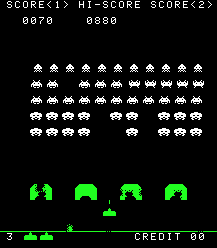Does #Gamification Have Advantages Over Traditionally Designed Instruction?
 Gamification has several definitions but the one I find most compelling is one that involves elements of games beyond just points, badges and leaderboards. A definition that includes using elements like challenge, story, role-play, feedback–what I call “deeper” game elements.
Gamification has several definitions but the one I find most compelling is one that involves elements of games beyond just points, badges and leaderboards. A definition that includes using elements like challenge, story, role-play, feedback–what I call “deeper” game elements.
When examined that way, one major advantage that gamification has over many traditionally designed e-learning courses and classroom lectures is the high level of interactivity, the expectation of a difficult challenge and the process of continual feedback. These are some of the most the engaging elements of games and elements that can be effectively transferred to learning events.
Elements that when applied to instruction raises the level of learner engagement, focus and performance and that’s all documented in the literature regarding learning. Remember, it’s not that classroom instruction or e-learning courses can’t have these elements, it’s that typically they don’t. Gamification creates a lens for designing instruction that is far more interactive and creative than the traditional instructional design model used by so many people and organizations to create their instruction. The traditional design of instruction is based around the content, game development is based around the activity…big difference.
The large majority of traditionally designed instruction contains course objectives—not challenges, bulleted lists—not interactivity and end-of-lesson quizzes—not continual corrective feedback. Interactivity, challenges and continual feedback are what makes gamification so effective as a perspective for designing and delivering instruction.
Posted in: Games
Leave a Comment (3) ↓
Is this gamification? To me it sounds more like serious gaming. Gamification is putting game elements into reality. Serious gaming is playing a game and learning from it.
Kind Regards,
Ed HemdMans
Thanks for the information, the course sounds very interesting, will it be a MOOC? We are of the same mind in terms of creating a learning pedagogy that causes a revolution, we need to get away from a testing approach to excellence and bring in more interactivity, challenge and continual corrective feedback…that will lead to more engagement and richer learning.
I strongly believe “interactivity, challenges and continual feedback” are the three ingredients that needs to be added to current system of education, in order to revolutionize the learning pedagogy. I along with some other people are planning to build a model on the same lines for a online course (Designing a New Learning Environment by Paul Kim: Chief Technology Officer and Assistant Dean, School of Education, Stanford University).